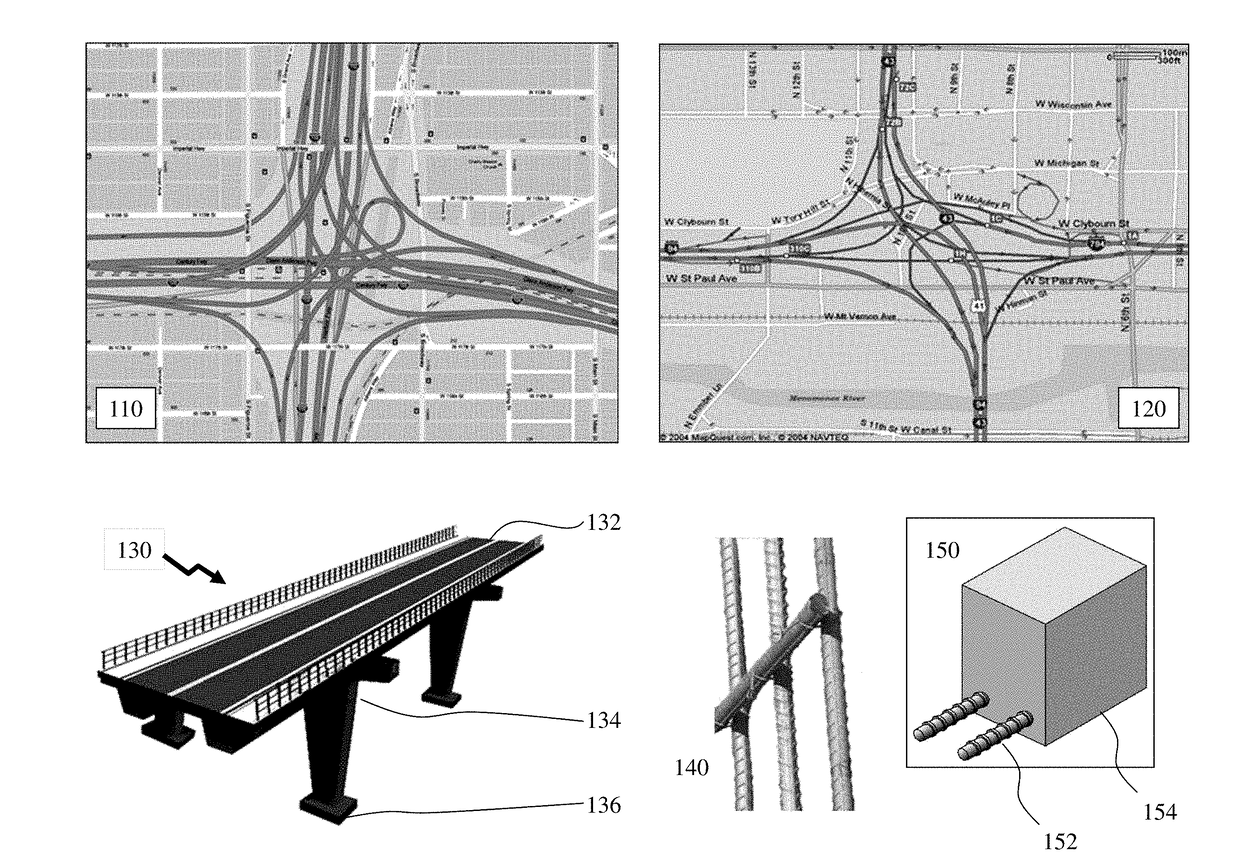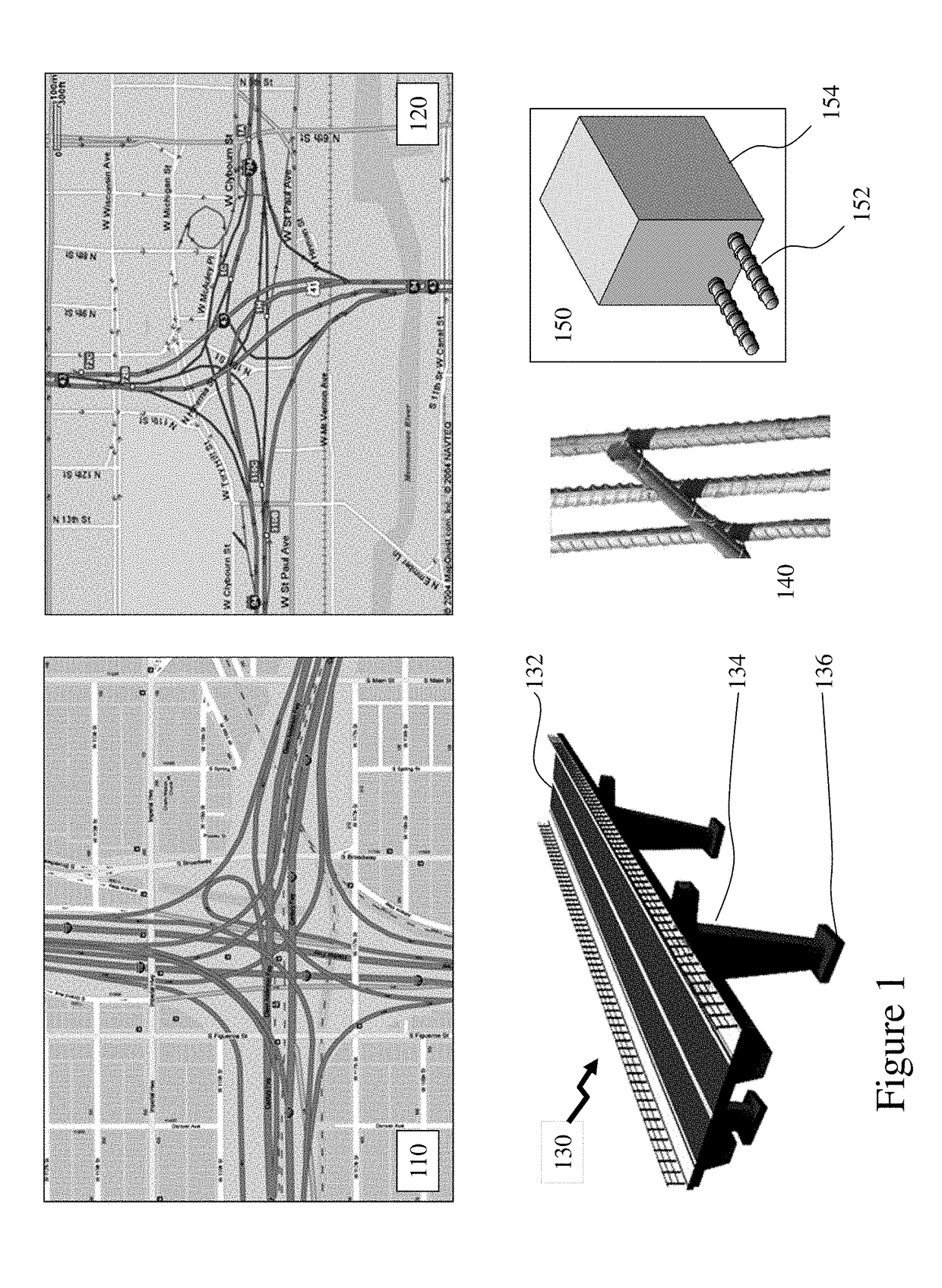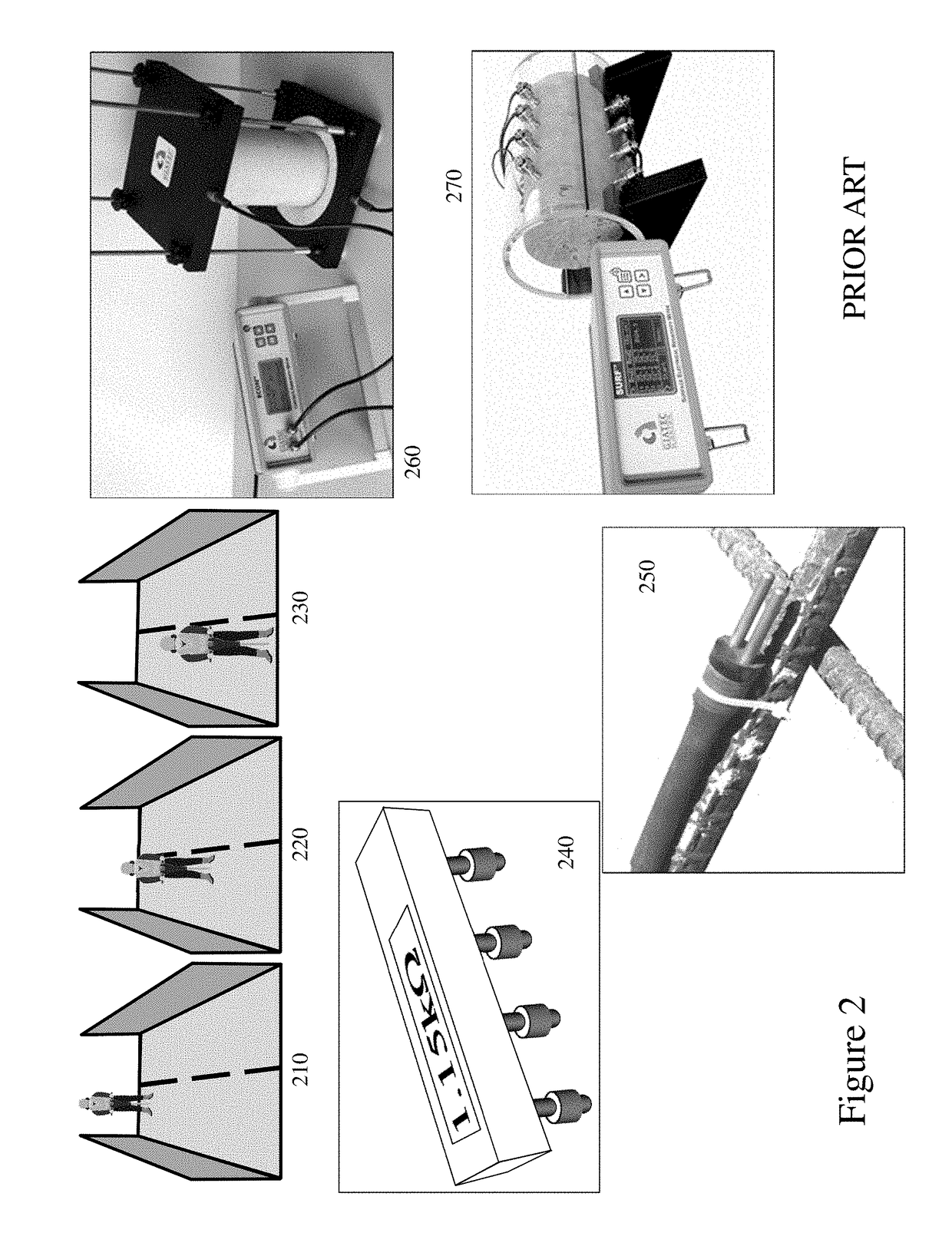Whilst perhaps overly dramatic these are just two of the 600,000 bridges and millions of buildings in the US requiring characterization for
corrosion.
A work
crew returning may be addressing a small area but without alignment to the
physical structure the measurements provide no additional benefit and accordingly it is likely that the physical intervention will involve a substantial portion of the
road surface.
Likewise, a simple error in denoting which side of the road the measurements were made on results in the wrong side of the
road surface being ripped up.
However, these embedded sensors are expensive individually and deploying a matrix of them across say even a 100 m×10m bridge prohibitive even without considering the additional complexities of interface cabling, measurement
electronics etc.
The measurement of steel
corrosion potential inside concrete directly below the surface 0020 of an insulating material such as
asphalt or tarmac is not possible.
However, direct measurement of the low-frequency impedance of
rebar in concrete is very time-consuming and vulnerable to
noise interruption as discussed supra; hence it is not practical to use this technique in the field to measure the corrosion rate of
rebar inside the concrete.
Higher
water content increases the
porosity of the hardened concrete and thus decreases its strength and durability but low
water content, in contrast, decreases the workability of concrete.
In the latter, the ingress of aggressive ions such as chlorides into the pore structure of concrete increases the
conductivity of the pore solution and thus decreases the
electrical impedance of concrete.
However,
rebar(s) within the concrete can disturb the electrical resistivity measurements and accordingly the recommended measurement orientation of the 4-point Wenner / Schlumberger probes is determined by the spacing of the rebars as ideally the orientation is
diagonal to the
square matrix of rebars but if this not possible then the orientation should be perpendicular to the rebar.
However, in the case of passive, non-corroded, rebar because of the high polarization resistance of the passive layer on the surface of the rebar the current passage through the rebar would be very limited, and therefore, increases over time as a result of polarization, i.e. charge of double
layers of capacitors.
However, even these measurements whilst advancing the data and information available to the construction team, architect,
quality management,
surveyor,
regulatory authority etc. have limitations with respect to the number that can be used, their locations, etc. and the fact that the measurements taken may require
detailed data such as a maturity
calibration curve from the concrete producer.
Further, an essential portion of the “chain” is still not captured and accordingly pre-
acceptance testing of the concrete may still be necessary prior to its being poured at the site.
Lack of an
accurate estimation of strength at early ages of construction is twofold: contractors either wait too long for next action (e.g. stripping formwork) which is costly due to delays in completing the project, or they act prematurely which could cause the concrete structure to crack—that would lead to future durability and performance issues—or even structural collapse.
The problem, however, is that only one specimen is crushed for strength
estimation.
This method is limited to use in horizontal and thick concrete elements like slabs.
This adds to the cost of construction and its uncertainty decreases the efficiency of the construction.
Although
alternative methods such as concrete maturity exist, there is a traditional resistance to utilizing them for most concrete projects.
Such approaches to
compressive strength evaluation may cause concrete contractors to make conservative decisions, face more complicated technical problem (e.g.
delay in formwork stripping, and unnecessary long-term curing and surface protection), and spend more financial resources.
Some of important limitations of this method are listed as follows:In-place concrete is not representative of the concrete used to develop the calibration in the lab.
;In-place concrete is not properly placed, consolidated, cured, etc.
;Very high early-age temperatures can lead to inaccurate
estimation of strength at later ages;Using a datum temperature (for the Nurse-Saul function) that is not representative of the concrete mixture can result in incorrect estimation of strength.
This is mainly due to the upfront cost of concrete mixture calibration for maturity curves, and lack of expertise for the installation of concrete temperature sensors, data collection and analysis.
However, the electrical resistivity measured is also impacted by the presence of
humidity and the water content of the concrete.
Accordingly, these scenarios result in the challenge of properly identifying the location of the SMAK.
These may, for example, be a restriction on how long formwork can be left up after construction material is poured, how much material is required, time limits for delivery and pouring as the location may be within a busy downtown core, an issue from another aspect of the project etc.
Further, as this may be problematic for some or all deliveries the admixture(s) may be preloaded into one or more dispensers which are automatically triggered based upon downloading of a program to the concrete
truck from the
database for a specific delivery batch.
Equally, such analysis may determine that a batch having been loaded for two hours reaches a point where subsequent deployment will result in reduced performance or that the current projected environmental conditions will require all loads to be poured within a predetermined period of time if the concrete is required as a single contiguous block rather than multiple
layers as a second pour is made upon a curing previous pour etc.
 Login to View More
Login to View More 


